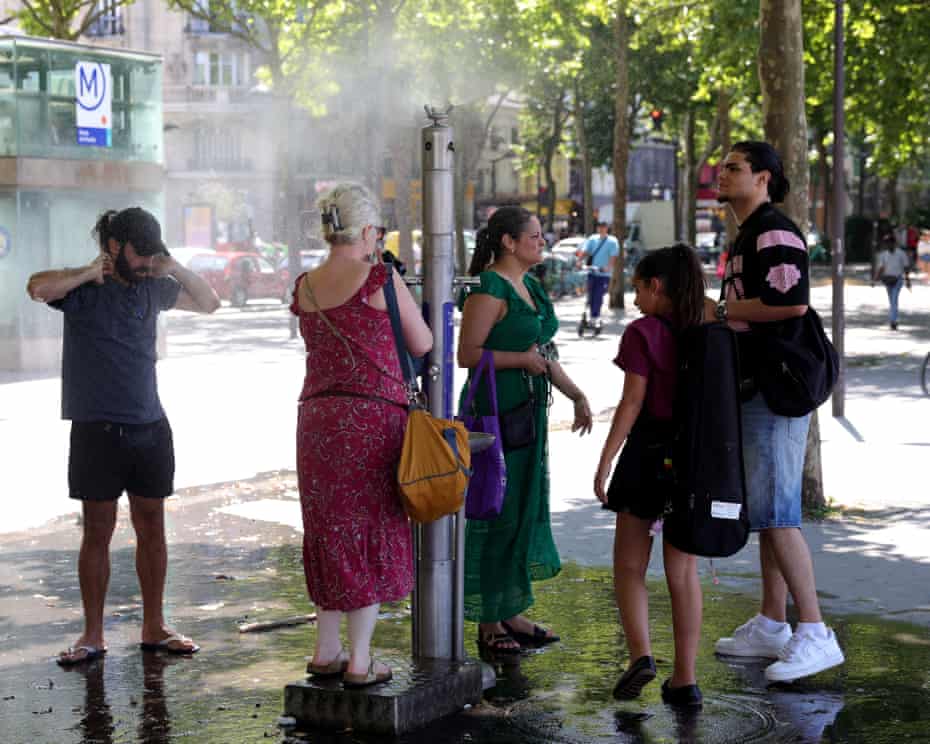Southern Europe is sweltering under a punishing heatwave, with temperatures reaching a blistering 46°C in parts of Spain and nearly all of mainland France placed under weather alert.
The extreme heat, intensified by fossil fuel-driven climate change, has enveloped Portugal, Spain, France, Italy and Greece in the season’s first major heatwave, sparking health warnings, wildfires, and widespread disruption.
In Turkey, more than 50,000 people have been evacuated from their homes due to raging forest fires, according to the country’s interior ministry and disaster management agency. Across Europe, authorities have scrambled emergency services to combat the growing threat of wildfires and heat-related health risks.
At a development conference in Seville on Monday, UN Secretary-General António Guterres issued a stark warning: “Extreme heat is no longer a rare event, it has become the new normal.” In his home country of Portugal, a sweltering 46.6°C was recorded in Mora, east of Lisbon, potentially a new record for June, pending official confirmation.
Spain’s heatwave
Spain has borne the brunt of the heatwave. On Saturday, a June temperature record of 46°C was set in El Granado, Andalucía, breaking the previous high of 45.2°C recorded in Seville in 1965. Sunday marked the hottest 29 June in Spanish history, according to the national meteorological agency Aemet, with the brutal heat expected to continue until Thursday.
Doctors across the continent have voiced concern over the combination of scorching daytime temperatures and persistently hot nights, with minimums of 25°C expected in some regions, which places intense strain on the human body, particularly among older adults and those with chronic illnesses.
Italy has placed 21 of its 27 major cities on the highest level of heat alert, with some hospitals in regions like Tuscany reporting a 20% rise in admissions. Residents have been advised to avoid going outside between 11 am and 6 pm.
In France, Météo-France has issued orange heat alerts for 88% of administrative departments, the first time such widespread warnings have been enacted. “This is unprecedented,” said ecology minister Agnès Pannier-Runacher. Authorities have asked businesses to adjust working hours to protect employees, and over 200 schools are partially or fully closed. A wildfire in the south-west burned 400 hectares over the weekend, forcing more than 100 people to evacuate.
Germany, too, is on alert. The weather service has warned of increased wildfire risk, and some municipalities have restricted water usage as temperatures are expected to reach 40°C by midweek. In Brandenburg, which surrounds Berlin, employers have been reminded of their legal obligations to protect workers from extreme heat.
In the UK, temperatures could hit 34°C in London and the south-east, with the Met Office warning of “uncomfortable” conditions for outdoor workers and festival-goers leaving Glastonbury or attending Wimbledon.
Urban heat is proving especially dangerous. “Populations in urban areas like London are particularly susceptible,” said Dr Radhika Khosla of the University of Oxford. “Concrete and asphalt absorb and re-emit the sun’s radiation, amplifying its impact. Outdoor workers must take regular breaks, hydrate, and seek shade.”
Across Europe, volunteers from the Red Cross and Red Crescent are handing out water, supporting emergency services, and checking in on vulnerable individuals. Fires are also being battled in Greece and Norway.
Heat is already one of the deadliest natural hazards, claiming around 500,000 lives globally each year. Scientists warn that climate change is only intensifying the risk. A persistent heat dome, a weather pattern trapping high-pressure hot air, is driving the current crisis in Europe and simultaneously scorching parts of the US.



